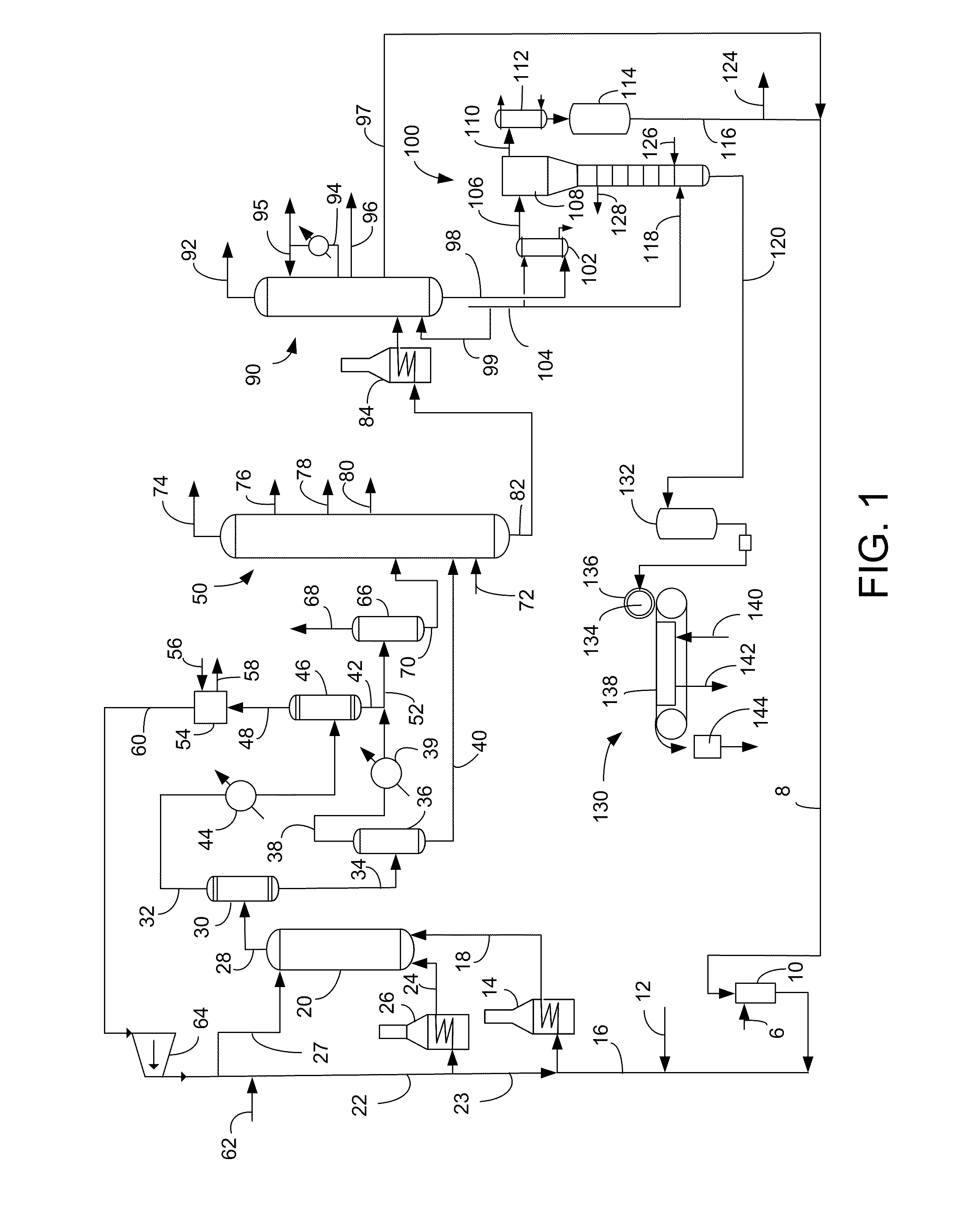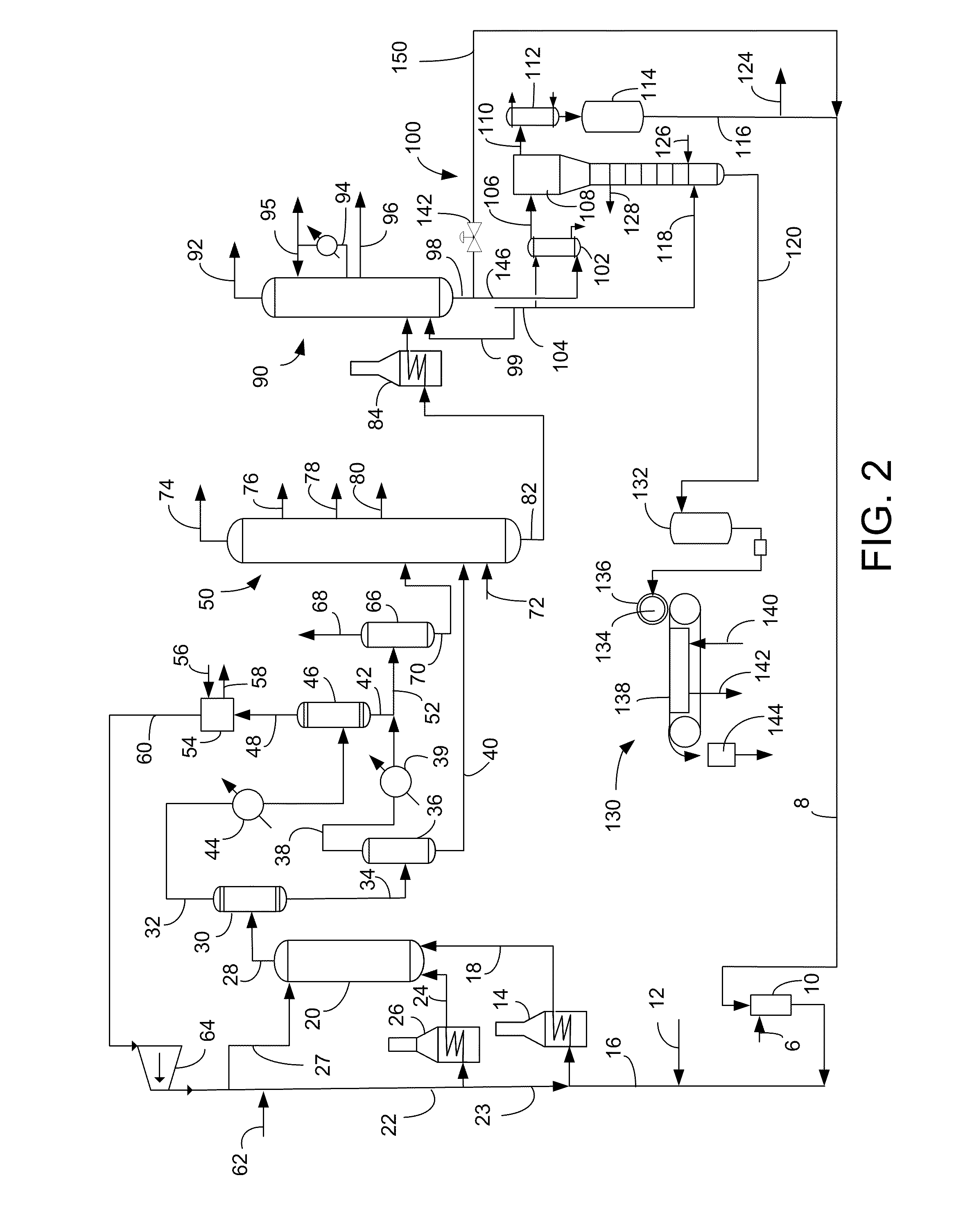Pitch composition
a composition and pitch technology, applied in the direction of hydrocarbon oil treatment, working up pitch/asphalt/bitumen, effluent separation, etc., can solve the problems of inability to move over any great distance, additional capital and operating expense, difficulty in determining the onset of sticking, or softening point, etc., to reduce coking and cracking concerns, less sticky, and solidification easier
- Summary
- Abstract
- Description
- Claims
- Application Information
AI Technical Summary
Benefits of technology
Problems solved by technology
Method used
Image
Examples
example 1
[0042]To determine which pitch materials can be solidified and transported, 66° C. (150° F.) was taken as a highest temperature to which pitch materials would be exposed during transportation, considering an acceptable safe operating margin. Pitch materials would have to be transportable up to this maximum temperature without beginning to stick together. That is, acceptable pitch composition must exhibit an onset of softening temperature of at least 66° C. (150° F.).
[0043]A procedure for using a thermomechanical analyzer (TMA) is similar to a procedure reported for measuring densities of powdered molding polymer by McNally, G. and McCourt, M., DENSITY MEASUREMENT OF THERMOPLASTIC POWDERS DURING HEATING AND COOLING CYCLES USING THERMAL MECHANICAL ANALYSIS, ANTEC 2002 Conference Proceedings, 1956-1960. A TMA Model Q400 from TA Instruments of New Castle, Del. was used to measure the melting onset temperature and the fusion temperature. About 10 mg of hand-ground, unsized pitch powder w...
example 2
[0056]A vacuum residue of Russian Urals heavy-sour crude was slurry hydrocracked in a pilot plant reactor at 13.8 MPa (2000 psi) in the presence of hydrogen using an iron sulfate-based catalyst. The pilot plant was run in full recycle mode with recovery of VGO from the pitch by a wiped film evaporator running at 300-320° C. and around 67 to 267 Pa (0.5-2 torr). The HVGO fraction 427-524° C. (800-975° F.) was recycled to the SHC reactor. Pitch samples were tested for onset softening temperature by TMA and for hydrogen and other properties. Concentrations were calculated on an ash-free basis. The results are shown in Table 2.
[0057]
TABLE 2Test No.units31333537383941VGOwt-%8.310.615.39.36.423.07.6concentrationConversionwt-%67.769.078.986.385.185.886.3TMA Onset° C.29.232.543.682.778.366.672.7TemperatureHydrogenwt-%8.68.98.17.46.56.96.5Densityg / ml1.281.021.171.271.201.231.08TIORwt-%2.82.57.710.216.211.012.0concentration
[0058]It can be seen that VGO concentration does not necessarily direc...
PUM
| Property | Measurement | Unit |
|---|---|---|
| softening point temperature | aaaaa | aaaaa |
| softening point temperature | aaaaa | aaaaa |
| density | aaaaa | aaaaa |
Abstract
Description
Claims
Application Information
 Login to View More
Login to View More - R&D
- Intellectual Property
- Life Sciences
- Materials
- Tech Scout
- Unparalleled Data Quality
- Higher Quality Content
- 60% Fewer Hallucinations
Browse by: Latest US Patents, China's latest patents, Technical Efficacy Thesaurus, Application Domain, Technology Topic, Popular Technical Reports.
© 2025 PatSnap. All rights reserved.Legal|Privacy policy|Modern Slavery Act Transparency Statement|Sitemap|About US| Contact US: help@patsnap.com



